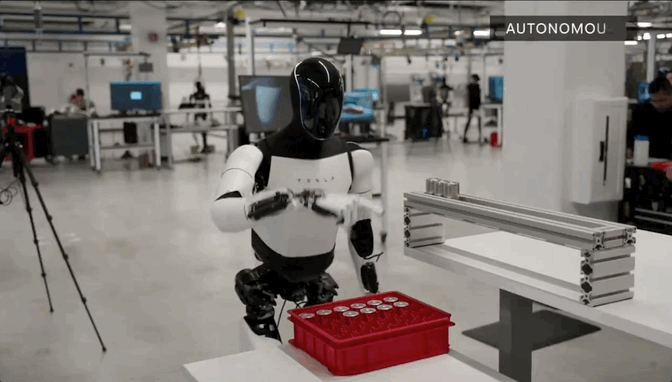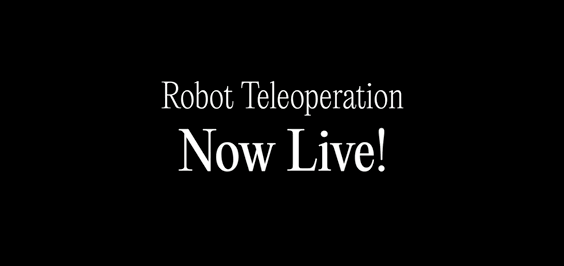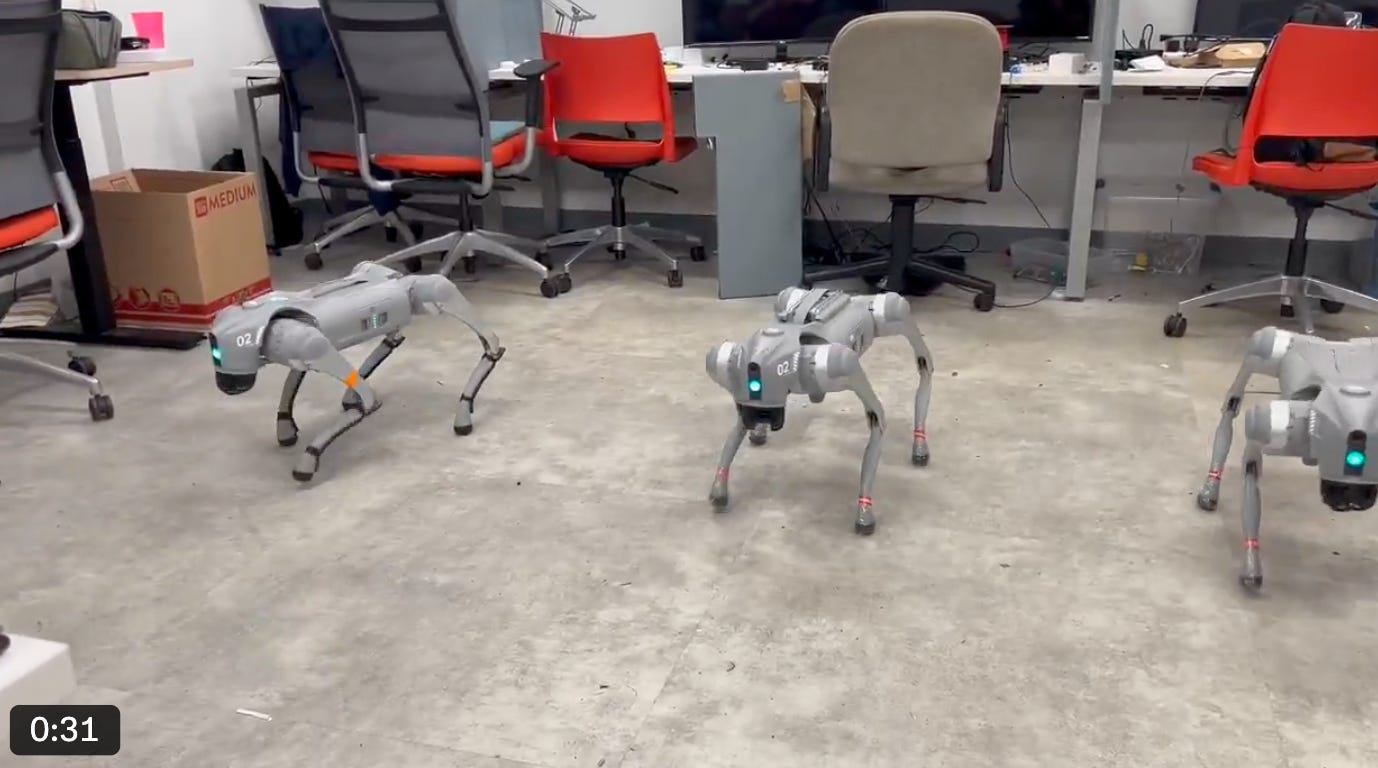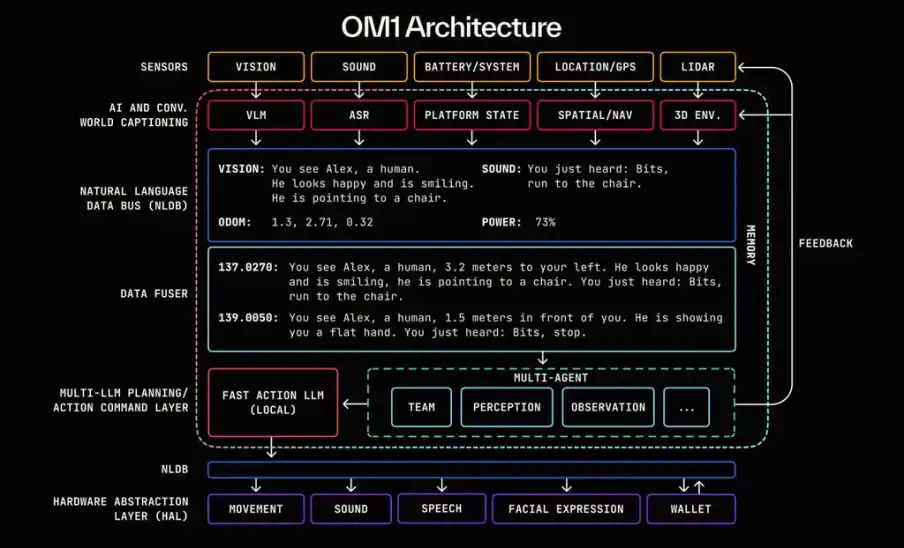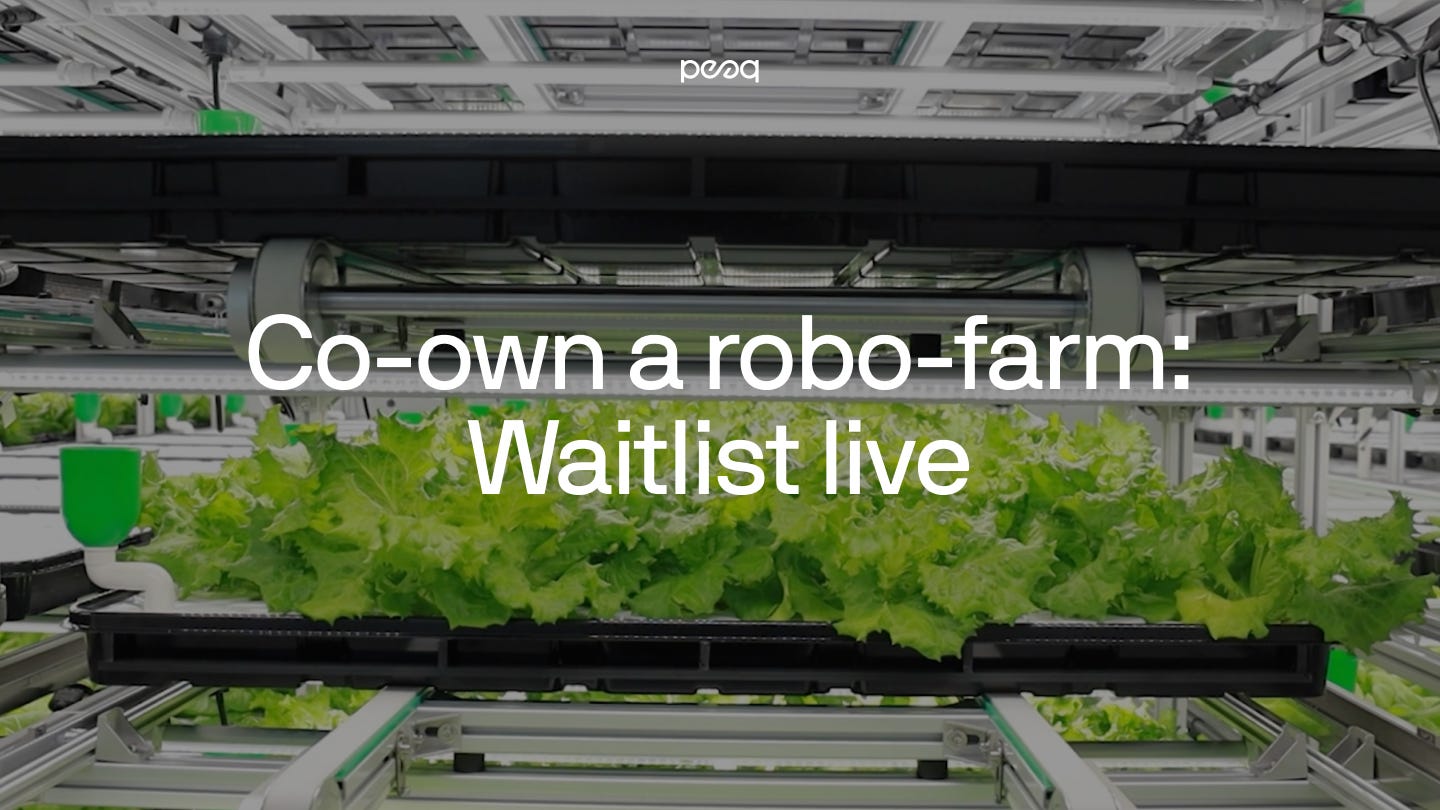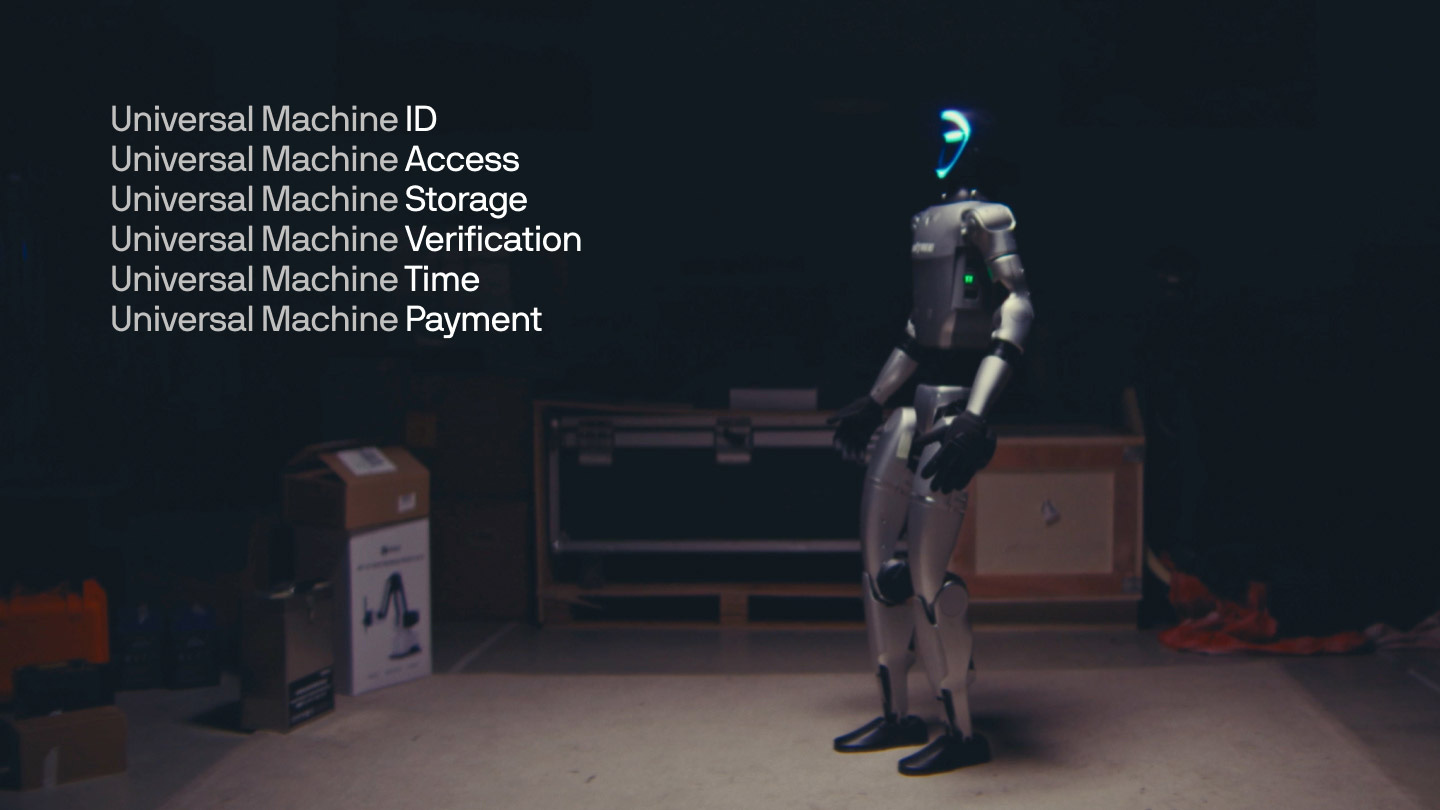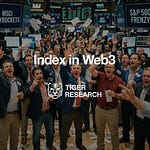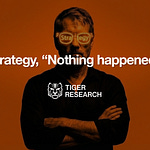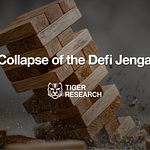This report was written by Tiger Research, analyzing how blockchain technology is being utilized in the robotics industry.
TL;DR
Blockchain supports the robotics industry’s development across four key areas: securing high-quality data (PrismaX, OVR), orchestrating robot collaboration (Sui), developing open-source OS (Openmind), and building robot economic infrastructure (Peaq).
Existing payment systems suffice for humans. Robots require decentralized structures for collaboration and autonomous transactions. This suggests that blockchain may serve as more suitable infrastructure for robots than for humans.
Morgan Stanley projects the deployment of 1 billion humanoids by 2050. Blockchain will likely establish itself as core infrastructure as the robot economy materializes.
1. The Next Meta in Crypto: Robotics
A new narrative is emerging in crypto in 2025: robotics.
Companies like Tesla with Optimus and Figure with Helix are racing to develop humanoid robots and prove their commercial viability. This has captured intense industry attention. Just 10 years ago, SoftBank’s humanoid robot Pepper could only perform simple greetings and basic guidance. Today’s humanoid robots have reached an entirely different level.
Robotics has shifted from distant future technology to present reality. The crypto industry is paying close attention. This report analyzes how robotics and crypto technology converge through key projects and examines the potential of this emerging narrative.
2. Why Does the Robotics Industry Need Crypto?
The robotics industry achieved breakthrough progress through integration with artificial intelligence. AI now serves as the ‘brain’ of humanoid robots. It enables robots to perceive their environment and make autonomous decisions. Google’s Gemini Robotics demonstration showcases this powerful synergy.
However, several challenges remain for commercialization. The industry needs high-quality training data. It must build reliable systems for multi-robot collaboration. High hardware costs limit accessibility. New robotics-focused crypto projects are emerging to address these challenges. Existing blockchain projects are also expanding into robotics.
2.1. Securing High-Quality Data for Robotics
Large language models train on trillions of text samples from the internet. Vision models learn from billions of images. But robotics lacks comparable datasets. Robots need physical interaction data from the real world. This data cannot be web-crawled. It must be collected through direct recording of actions and experiences. Open-source datasets like Open X-Embodiment and DROID contain only thousands of hours of data. This falls far short of capturing real-world complexity.
Token-incentive data collection projects are emerging to address this bottleneck. PrismaX builds a data marketplace that connects remote operators to robots through teleoperation. Operators remotely control robots to perform tasks like folding laundry, organizing items, and stocking shelves. The system automatically records motion trajectories and sensor data. The data undergoes quality evaluation. Operators then receive rewards. The collected data captures real-world variables and edge cases. This enables robots to learn physical world interactions similar to how language models learn from text.
Over the Reality (OVR) takes a different approach. Participants use smartphones and 360-degree cameras to scan physical spaces and build 3D visual maps. Participants provide spatial data and receive token rewards. The platform has accumulated over 150,000 locations and 70 million images. Robots use this spatial data to recognize unfamiliar environments and plan routes.
PrismaX and Over the Reality present a new model for collecting large-scale physical interaction data through token incentives. This data is difficult to obtain in centralized research environments. This approach alleviates the data bottleneck facing robotics AI. It provides a foundation to extend the scaling laws proven in language and vision models to the physical world. The SEC recently recognized DePIN tokens as rewards for network contributions. Data collection-focused robotics DePIN projects can now operate with reduced regulatory burden.
2.2. Blockchain-Based Robotics Orchestration
Another commercialization challenge is building environments where multiple robots collaborate. Robots working across different environments need to share information and divide tasks. The system must maintain consensus even when some robots malfunction or act maliciously. Blockchain’s Byzantine Fault Tolerance mechanism enables this through quorum-based consensus. Smart contracts automate rules for task sequencing and resource allocation.
Layer-1 blockchain Sui demonstrated a multi-robot collaboration demo. Sui supports ultra-low-latency consensus and dynamic object management based on the Mysticeti consensus protocol. Each robot shares a consistent state in a distributed environment. The system maintains consensus even when some robots malfunction or are compromised. Robots can collaborate without conflicts. This blockchain-based orchestration shows how reliable robot collaboration environments can operate without central servers.
2.3. Open-Source Operating Systems for Robotics
The robotics industry must move beyond closed software structures that individual companies control. Most robots today depend on specific manufacturers’ platforms. This makes hardware compatibility difficult. Developers must build systems from scratch. Open-source operating systems let diverse hardware and developers collaborate on common standards. This increases interoperability and accelerates innovation across the robotics ecosystem.
OpenMind exemplifies this direction. The project recently raised $20 million from investors including Pantera Capital. OpenMind is “Building Android for Robots” and developing OM1, an open-source operating system for robots. Just as Android unified the smartphone ecosystem, OM1 lets developers define a persona once and run it consistently across different robot forms like quadrupeds and humanoids. All robots can share the same standard regardless of manufacturer.
OM1’s open-source structure lets the community rapidly add features and make fixes. Developers can build their own robot systems without vendor lock-in. Global robot manufacturers including Unitree and Deep Robotics have adopted OM1. Open-source general-purpose robot operating systems can break down closed ecosystems. They provide a foundation to simultaneously increase scalability and accessibility across the robotics industry.
2.4. The Rise of Robot Economy: MachineFi
Robots are spreading beyond tools to become economic agents. This requires infrastructure for identity verification, transaction records, and contract execution. Robots need to complete tasks, receive payment, and purchase services. Currently, robots lack payment methods, identity verification, and reputation systems. Blockchain provides unforgeable digital identities. Smart contracts automate transactions. On-chain records manage work history and reputation.
Peaq operates a Layer-1 blockchain dedicated to machine economy. Peaq assigns unique identities to robots and lets them transact autonomously and receive payment. In 2025, Peaq launched an autonomous vertical farm in Hong Kong called Robo-farm. Robots automatically grow and sell crops and generate revenue. NFTs represent farm ownership that investors share. The system pays robot-generated revenue to token holders as dividends.
Morgan Stanley projects that 1 billion humanoid robots will deploy worldwide by 2040. If this MachineFi model extends to humanoids, people can co-purchase robots working in service or manufacturing and tokenize them to receive dividend income. Take delivery robots as an example. They authenticate with Peaq ID, complete tasks, and receive payment to their wallets. They purchase energy directly at charging stations. Peaq and XMAQUINA are launching a tokenized robo café pilot in Europe. Robots operate as assets and share revenue with investors. This will redefine the boundaries between labor and capital over time.
3. Robotics: A New Stage for Blockchain Adoption
The blockchain industry has mainly discussed use cases in finance and gaming. However, human society already enjoys convenient living thanks to the internet and existing payment networks. Credit cards, bank transfers, and mobile payments work smoothly. People rarely feel they need blockchain in daily life.
Robots present a different scenario. Multiple robots must collaborate simultaneously, verify each other’s trustworthiness, execute contracts autonomously, and process payments. Decentralized structures suit these requirements far better than central servers. Robot collaboration demands real-time data exchange, task division, and reward distribution. Blockchain automatically handles all these processes without single points of failure or hacking risks.
Perhaps blockchain was always technology for robots rather than humans. Morgan Stanley projects that 1 billion humanoid robots will deploy worldwide by 2050. Robots will work independently, generate revenue, and purchase services. This will create a full-scale “robot economy.” Blockchain will operate this robot economy as core infrastructure, moving beyond just a technology.
🐯 More from Tiger Research
Read more reports related to this research.Disclaimer
This report has been prepared based on materials believed to be reliable. However, we do not expressly or impliedly warrant the accuracy, completeness, and suitability of the information. We disclaim any liability for any losses arising from the use of this report or its contents. The conclusions and recommendations in this report are based on information available at the time of preparation and are subject to change without notice. All projects, estimates, forecasts, objectives, opinions, and views expressed in this report are subject to change without notice and may differ from or be contrary to the opinions of others or other organizations.
This document is for informational purposes only and should not be considered legal, business, investment, or tax advice. Any references to securities or digital assets are for illustrative purposes only and do not constitute an investment recommendation or an offer to provide investment advisory services. This material is not directed at investors or potential investors.
Terms of Usage
Tiger Research allows the fair use of its reports. ‘Fair use’ is a principle that broadly permits the use of specific content for public interest purposes, as long as it doesn’t harm the commercial value of the material. If the use aligns with the purpose of fair use, the reports can be utilized without prior permission. However, when citing Tiger Research’s reports, it is mandatory to 1) clearly state ‘Tiger Research’ as the source, 2) include the Tiger Research logo. If the material is to be restructured and published, separate negotiations are required. Unauthorized use of the reports may result in legal action.


